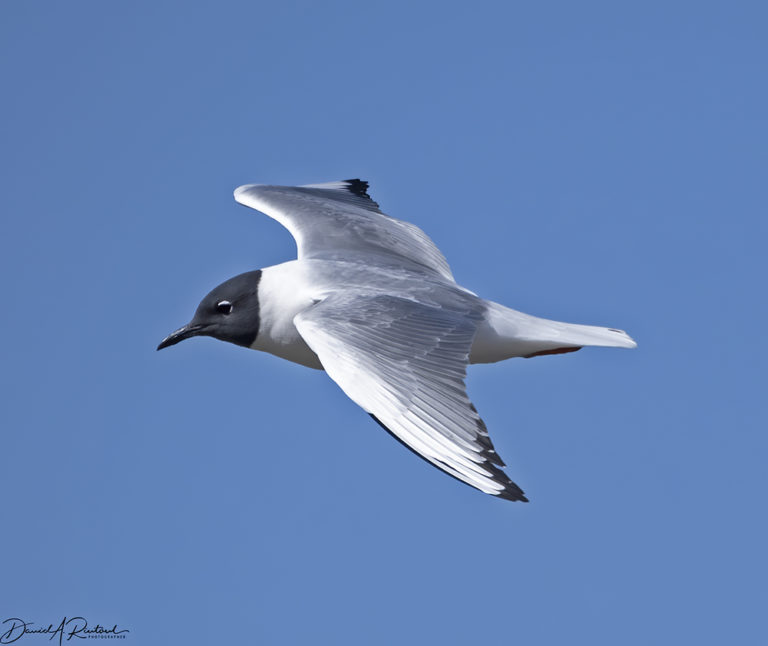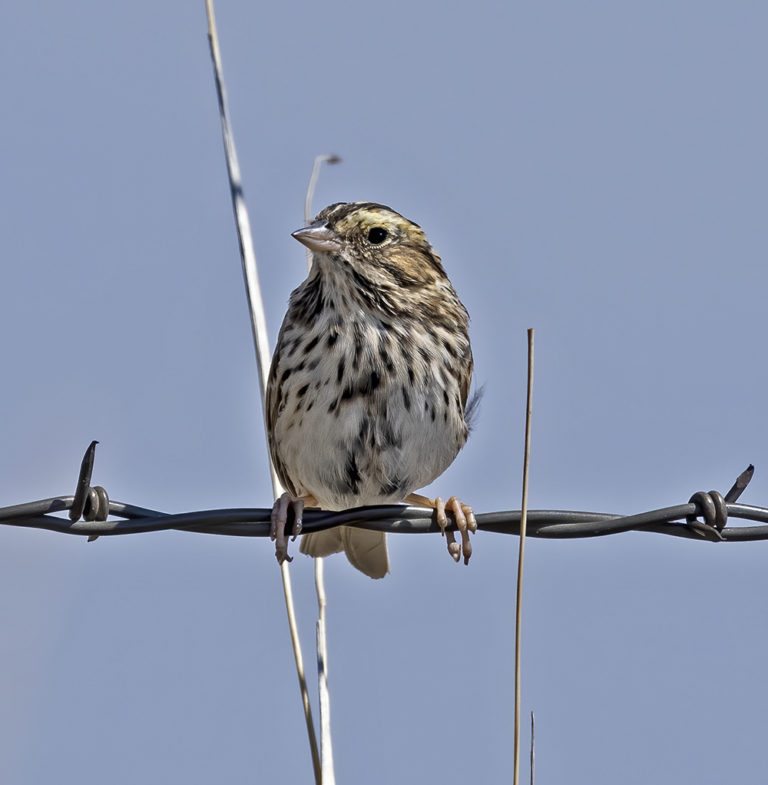On the Road is a weekday feature spotlighting reader photo submissions.
From the exotic to the familiar, whether you’re traveling or in your own backyard, we would love to see the world through your eyes.
Albatrossity
My first new submission to On the Road since Alain’s passing is still a celebration of spring, but tinged with sadness and regret that he could not be here to see the world with us.
Gulls and shorebirds and sparrows are now abundant, and passing through flyover country, but in a northbound direction. Some of these birds have a long ways to go still, others will end up in the prairie pothole region of the Dakotas and Canadian prairie provinces. All of them are in a hurry in the spring, particularly the long-distance migrants, because summer is short in the Arctic and days are precious.

But first a photo of something that Alain would have appreciated – wild mushrooms. We don’t get the king bolete here in Kansas, but in terms of tastiness, morels are a close second. Here’s a harvest from a couple of years ago. We usually eat some and freeze-dry most of them so that we can enjoy them in stews and pasta dishes year-round.

One of the most elegant gulls on the planet, the Bonaparte’s Gull (not named after the emperor, but rather after the 19th-century ornithologist Charles Lucien Bonaparte) passes through a large swath of the country every spring and fall, so it is familiar to most birders in North America. Its breeding range is less well-known, since it is in remote high-latitude taiga and boreal forest in Canada and Alaska. It is the only gull species that nests in trees.

The habitat for migratory shorebirds in my part of the state is pretty marginal, but we do get a few trickling through here. These are Marbled Godwits (or Garbled Dimwits, or Garbled Modwits, as some birders name them), flying past a gibbous moon on their way north to the Dakotas.

Another common migrant shorebird all across the country is this one, the Lesser Yellowlegs. It breeds in the Arctic, a bit further north than a congeneric and similar species, the Greater Yellowlegs. Sadly, there is no Intermediate Yellowlegs to complete the trilogy.

A third migrant shorebird seen here recently, the American Avocet. These are short-range migrants; some even stop for the summer and raise kids in the marshes at Quivira NWR and Cheyenne Bottoms in central KS. In spring that rusty head is quite striking, but the fall plumage is much duller gray and white.

Ospreys are common breeders on the coasts and in mountain lakes, but only appear in Kansas in spring and fall migration. Attempts to introduce them as breeding species have failed so far, but someday that might happen. This one is feasting well on a large gizzard shad.

Savannah Sparrows are abundant migrants across North America as well, but there are different subspecies that make things interesting for the more obsessive-compulsive birders. This one is pretty typical, and is on its way perhaps just a bit further north to the Dakotas, or perhaps all the way to the far northwestern tip of Alaska.

The final bird in this batch is a local breeder that has just recently arrived, although in some winters (if we have an abundant acorn crop) they will winter here. The Red-headed Woodpecker is found west of the Rockies, but its numbers are declining over most of its range. Numbers seem to be pretty stable here, thankfully.

eclare
That Red-headed Woodpecker is striking! Lovely post with the mushrooms.
Amir Khalid
These flying-dinosaur pictures by Albatrossity are awesome, as always. Especially the osprey with his lunch.
I looked Charles Lucien Bonaparte up. He was in fact a nephew of Napoleon Bonaparte I. He was distantly related to Charles Joseph Bonaparte, a great-nephew of Napoleon (from the non-aristocratic American branch of the family) who, as US Attorney General under Teddy Roosevelt, established the investigative agency that later became the FBI.
?BillinGlendaleCA
I’ve seen the Red-headed Woodpecker in the San Gabriels, even took a rather poor picture.
Rob
I saw a Red-headed Woodpecker yesterday at a local park where the species is not normally found. That was thrilling.
OzarkHillbilly
I’m not sure if I admire your self control or am horrified by such treatment of these delectable morsels more.
?BillinGlendaleCA
@OzarkHillbilly:
Blech.
JPL
Yellowlegs is awesome!
Editor Testing
@OzarkHillbilly: Well, if you do it right you can rehydrate them later and use them in lots of dishes. They are definitely a little better tasting when fresh, but the dried ones last several years and taste just fine in a wild-rice/mushroom soup in mid-winter!
Honus
I’d walk over boletes to get to morels any day.
Dorothy A. Winsor
Lordy, you’re a good photographer, Albatrossity.
Albatrossity
@OzarkHillbilly:
Well, if you do it right you can rehydrate them later and use them in lots of dishes. They are definitely a little better tasting when fresh, but the dried ones last several years and taste just fine in a wild-rice/mushroom soup in mid-winter!
Nelle
Thank you. The other day, when I was feeling quite low, I sat out and just watched ordinary robins in my backyard. Hop. Hop. Tilt head this way toward the ground. That way. Then plunge the beak down and come up with a worm. After 20 minutes of watching, I found my spirit loosening and lifting. Careful observation outside will do that.
One of my best guides for approaching life is On Watching Birds, by Lawrence Kilham (who was actually a virologist). I used excerpts in teaching composition as I found his approach to learning through observation so valuable. That book, and Samuel Scudder’s essay on studying with Louis Aggasiz, should be required reading.
I had the great privilege of eight summers in a small village, Kaktovik, in the Arctic National Wildlife refuge (I married a bush pilot). What a celebration of birds in their nesting grounds.
WaterGirl
Astonishing photos, once again, Albatrossity.
I love the Lesser Yellowlegs so much. How can that stunning bird be called “Lesser”!?
The Red-headed Woodpecker is also incredible! I have never seen one, but wow. Just wow.
Duke of Clay
Have you no shame! Displaying your loose morels on the internet.
arrieve
I really needed these pictures this morning, Albatrossity — thank you! I had no idea so many shorebirds passed through the prairies.
Ordinarily I would be spending a lot of time in Central Park this time of year watching all the migrants and taking mediocre pictures. But though the park is open, I hate wearing a mask for longer than absolutely necessary and I’m definitely not going for the four mile round trip walk to the Ramble (the area in the park where the best birds hang out.) It’s a gorgeous morning, and I do hear a lot of birds singing outside my bedroom window, but I’ve never learned to identify most birds by song. Maybe that can be a quarantine project….
KSinMA
Thank you, Albatrossity! Marvelous pictures.
MelissaM
Your photos are amazing. I know you must have thousands of pictures that you feel are not worthy, but I am gobsmacked at how you get a shot of flying birds with the moon in the background! Amazing!
Mary G
That osprey is one scary dude.
J R in WV
@MelissaM:
That was mostly because of the well-trained birds, flying a precise course! ;-)
MelissaM
@J R in WV: How many times do you think he had them do it again??
Albatrossity
@MelissaM: Well, I usually shoot flying birds in burst mode (8-10 frames per second), so that I have plenty of (hopefully in-focus) images to choose from. In this case I got lucky and they flew in front of the moon, so I chose that one!
Cheryl from Maryland
Thanks, Albatrossity. Wayne has taken to watching the birds at the feeders rather than just tolerating my hobby. Watching them is refreshing to our spirits and good dinner time conversation. He’s particularly fond of a red-bellied woodpecker and a pair of downy woodpeckers. The red-bellied is huge and dinosaurlike — when it arrives, most of the other birds scatter. On the sad side, I’m resting one feeder as the mourning doves discovered it and emptied it in no time flat. Either they’ll forget or I’ll have to try a feed they dislike. Fortunately, the other two are designed so the doves can’t use them.
WaterGirl
@Cheryl from Maryland: What do you have against mourning doves? :-)
J R in WV
Morels are called molly moochers here in WV, for some reason. Once at a spring party on a friend’s farm up in Athens Co Ohio a tiny little girl, 5 or 6 y o came back to the farm house carrying a morel so big she was having trouble handling it. If it hadn’t been for the ‘shroom being hollow she might not have managed it. A foot and a half long at least.
Alain would have loved that pic of those wonderful mushrooms, thanks for sharing it with us.
So, here’s a follow-up on our roof damage from the tree falling. Joe and I spent close to 4 hours up on the hot black rubber roof Saturday afternoon and patched all the holes poked by tree branches. Most of the bigger holes had stubs of branches sticking out, which we removed with a big pair of channel lock pliers. We each had a beer when done.
Then yesterday evening late it rained again, HARD. And, yes, it rained in the guest bedroom too, the same dammed spot it leaked before I spent time and money fixing the roof. So today, once it’s dried off in the pretty sunshine, I’ll go back up and look for the elusive black hole in the black rubber… Dammit!!!
MelissaM
@Cheryl from Maryland:
My husband calls mourning doves “gangster birds.” They would sit on our safflower feeder and keep all the other birds away. And when we would sit on our deck, they would sit on the garage watching us, occasionally clucking, trying to get us to move.
My issue is with house finches who seem to need to sweep through the seed to find one, dumping most on the ground. Pigs!
opiejeanne
@?BillinGlendaleCA: Yeah, morels are not my favorite mushroom to eat but they are the single mushroom that does not have a convincing imitator. My objection to them is that they are difficult to clean and I don’t enjoy eating the dirt that the cook missed. We picked some in our neighborhood ditches and I couldn’t get all of the dirt out of the crevices.
Dave took a mushroom ID class at UW a few years ago and became convinced that we should only get mushrooms at the store. Too much risk of death.
opiejeanne
@Albatrossity: Your photos are wonderful. Thank you for sharing with us. I’ve never found enough morels to make a meal of them, just a random one sometimes next to a ditch on our road.
Mike in Oly
These are so great! I am really missing the local NWR and all the birds there. I usually go twice a month, but haven’t been since the beginning of March. Backyard birds are not as fun (tho a pair of sapsuckers has recently started using our ash tree for feeding so there’s that).
Tehanu
I live in L.A. and I’ve never been especially interested in birds, but (a) these are terrific pictures and (b) I was very happy this morning to see a blue jay right outside my window, especially as most of the birds we see around here are crows. In fact, I was beginning to think the crows had scared off all the other birds. So thanks for this.